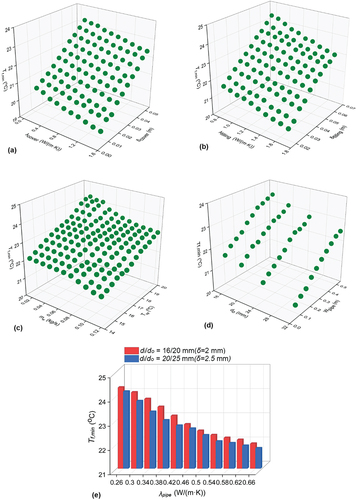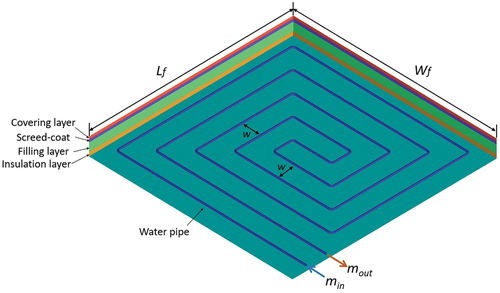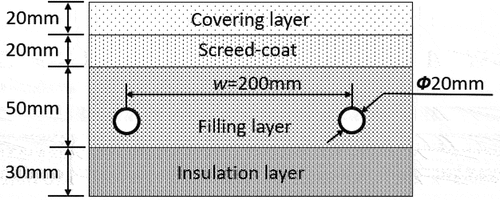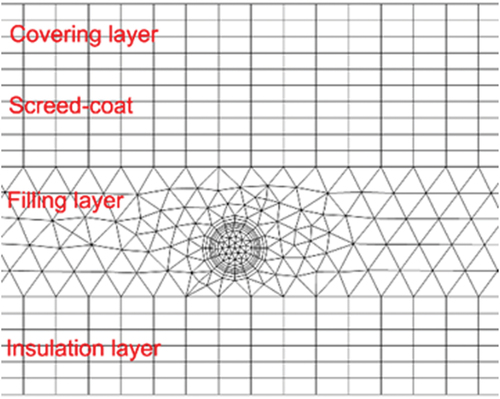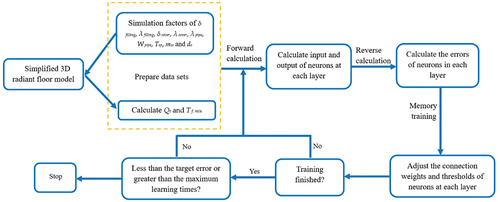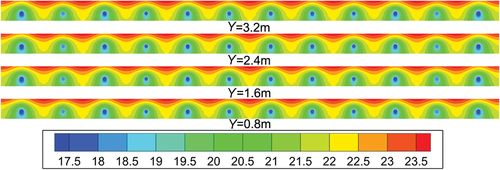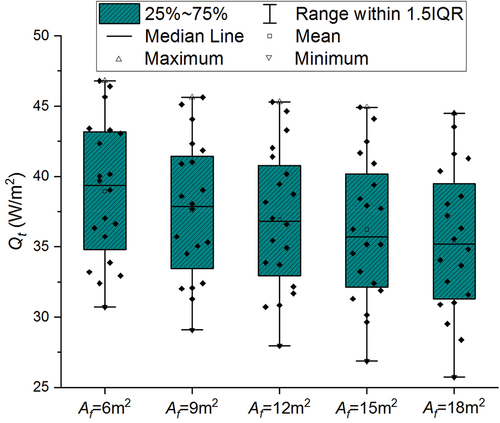Figures & data
Table 1. A brief review of floor cooling capacity calculation method.
Figure 1. Schematic diagram of the three-dimensional computational model: (a) isometric view of the simulation; (b) the pipe arrangement of the floor (Zheng et al. Citation2017).
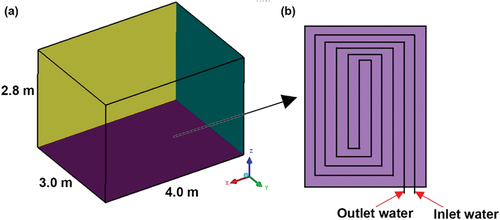
Figure 3. The top view of a simplified counterflow configuration with their dimensions and the pipes’ sequence.
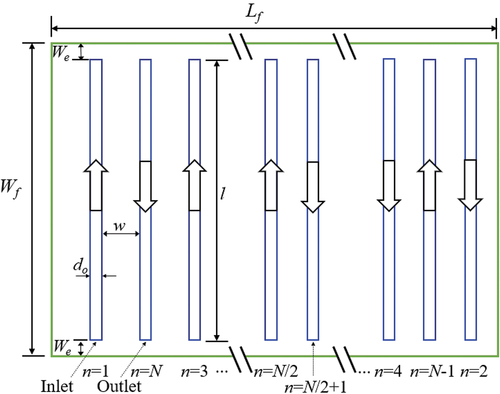
Figure 4. Two configurations of water flow pipes: (a) counterflow; (b) simplified counterflow. Blue sequence numbers indicate the inlet opening, and red sequence numbers indicate the outlet opening.
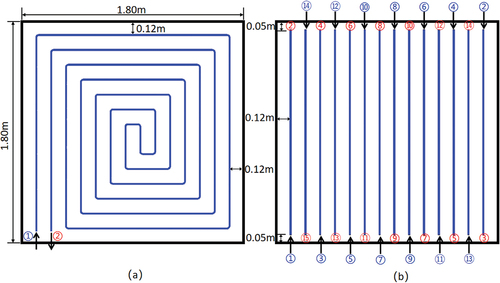
Table 2. The predefined thickness and thermal physical parameters of the floor structure.
Table 3. The descriptions of the pipe length design with different pipe spacings.
Table 4. The descriptions of the pipe length design with different floor areas when the pipe spacing is 0.20 m.
Table 5. The mean water supply temperature and mass flow rate.
Table 6. The mixed thermal boundary conditions for the floor surface (Ren et al. Citation2022; Zhu et al. Citation2022.).
Table 7. The grid independence analysis.
Figure 7. The schematic diagram of the laboratory: (a) the layout of measurement points; (b) the pipe arrangement in the test room (Acikgoz et al. Citation2019).
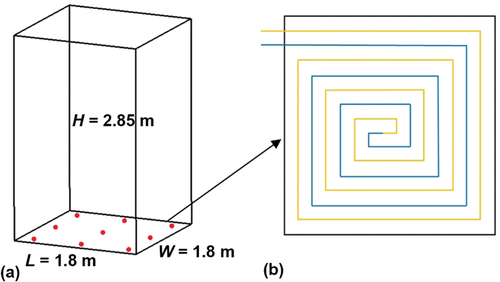
Figure 8. The CFD validation via comparison with the experiment: (a) mean return water temperature; (b) mean floor temperature; (c) total heat transfer flux.

Table 8. The error analysis of the numerical data compared with the experimental data.
Figure 9. The structure of the BP neural network (Zhang et al. Citation2020).
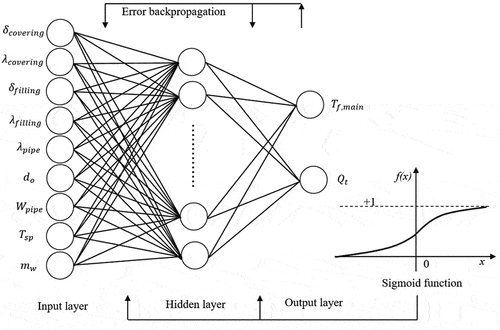
Figure 12. The distribution diagram of the floor temperature (°C) at different values of do: (a) do = 16 mm; (b) do = 20 mm; (c) do = 25 mm.
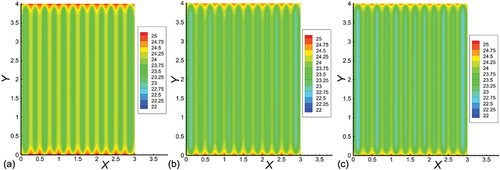
Table 9. The effect of the water supply with and without the pipe wall thickness.
Figure 14. The validation results of the simulated and predicted data: (a, b) the comparison results of the total cooling capacity; (c, d) the comparison results of the minimum temperature.
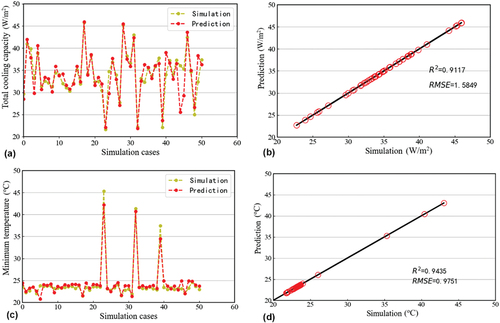
Figure 15. Interfaces of the prediction program: (a) single predict; (b) batch predict; (c) image display.
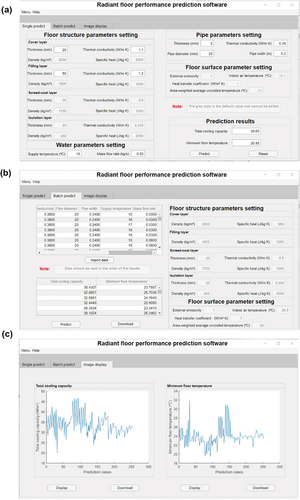
Figure 16. The 3D diagrams of the variation trends of Qt for different influencing factors: (a) the effects of δcover and λcover; (b) the effects of δfilling and λfilling; (c) the effects of Tsp and mw; (d) the effects of Wpip and do; (e) the effect of λpipe.
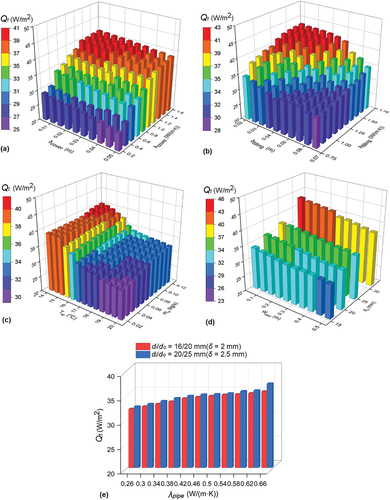
Figure 17. The 3D diagrams of the variation trends of Tf,min for different influencing factors: (a) the effects of δcover and λcover; (b) the effects of δfilling and λfilling; (c) the effects of Tsp and mw; (d) the effects of Wpip and do; (e) the effect of λpipe.
